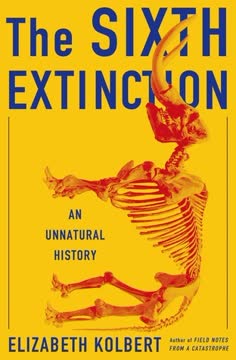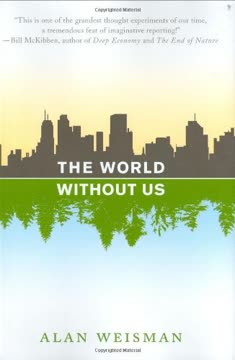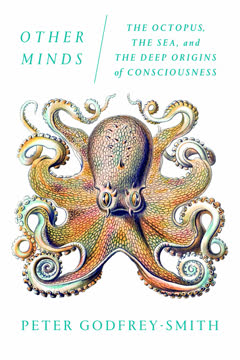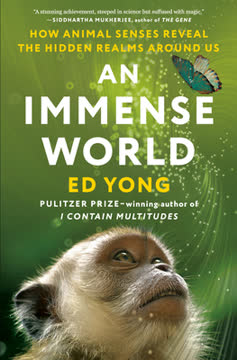Key Takeaways
1. Domestication is accelerated evolution driven by human-created environments.
Domesticated creatures provide some of the most dramatic examples of evolution in the world today.
Rapid transformation. Domestication is evolution on fast-forward, occurring over timescales comprehensible to humans, unlike the deep time of most evolutionary processes. In mere thousands of years, humans have reshaped species far more dramatically than millions of years of natural selection did their wild ancestors. The transition from wolf to the diverse array of dog breeds, from Chihuahuas to Great Danes, is a prime example of this accelerated change.
Human environment as selective force. The unprecedented surplus calories and altered ecological pressures within human settlements created novel environments. Animals that could adapt to living near or with humans gained a significant advantage. This new selective regime favored traits beneficial in a human-dominated world, leading to rapid evolutionary divergence from wild populations.
Darwin's insight. Charles Darwin recognized the power of artificial selection in domesticated species, using it as a compelling analogy for his theory of natural selection. The visible, rapid changes in domesticates like pigeons and dogs provided tangible proof that selection could drive significant evolutionary change over time.
2. Tameness is the key trait selected for in domestication, often initiated by the animals themselves.
As we will see, the domestication process was often initiated by the domesticated animals themselves, when they sought, for various reasons, human proximity.
Self-taming pioneers. The initial step in domestication wasn't always conscious human effort, but often the willingness of certain wild individuals to tolerate human presence. Animals like wolves and wildcats, drawn to human refuse or prey attracted to settlements, began to hang around human camps. Those less fearful or aggressive gained access to new resources.
Natural selection for tolerance. Within these pioneering populations, natural selection favored individuals with lower fear and aggression towards humans. These "tamer" individuals were more successful in the human-created niche, leaving more offspring. This process of self-taming, driven by ordinary natural selection, was the crucial first step.
Blurry boundary. The distinction between natural and artificial selection is often blurred in domestication. As humans became an increasingly important part of the environment, their influence on selection became more pronounced, even before conscious breeding for specific traits began. The animals were adapting to a human-shaped world, and humans were part of that selective pressure.
3. Selection for tameness causes a suite of correlated traits: the "domesticated phenotype."
It seems that, in selecting for one trait, humans invariably inadvertently affect other, seemingly unrelated traits.
Package deal. Selecting for tameness often results in a suite of correlated changes across behavior, physiology, and morphology, known as the "domesticated phenotype" or "domestication syndrome." This occurs because single genes or developmental pathways can influence multiple traits (pleiotropy).
Common traits include:
- Reduced fear and aggression (tameness)
- Increased sociality (towards humans and often conspecifics)
- Changes in coat color (especially white spotting)
- Floppy ears
- Curled tails
- Reduced body size (initially)
- Shorter snouts and broader faces
- Reduced brain size
- Reduced sexual dimorphism
Unintended consequences. These correlated traits are often by-products of selection for tameness, not directly selected for themselves. While some, like increased sociality, might be beneficial, others, like extreme skull shapes in some dog breeds, can lead to significant health problems, highlighting the unpredictable nature of selection.
4. The domesticated phenotype often involves retaining juvenile traits (paedomorphosis).
It seems, then, that general physical and psychological development of the silver foxes was significantly slowed, and reproductive development accelerated, by selection for tameness.
Juvenile features persist. Many traits of the domesticated phenotype resemble characteristics of juvenile wild animals. This retention of juvenile traits into adulthood is called paedomorphosis, which can occur through slowed developmental rates (neoteny) or accelerated sexual maturation (progenesis).
Fox experiment evidence. Dmitry Belyaev's silver fox experiment provided compelling evidence for paedomorphosis. Foxes selected solely for tameness developed floppy ears, curled tails, and shorter snouts – traits typical of fox pups. They also reached sexual maturity earlier (progenesis) while their stress response development was retarded (neoteny).
Stress response link. Changes in the hypothalamic-pituitary-adrenal (HPA) axis, which regulates the stress response, appear to be a key mechanism linking tameness to paedomorphosis. Lower stress hormone levels in tame animals may influence the timing of various developmental processes, leading to the retention of juvenile characteristics.
5. Evolution is fundamentally conservative, tinkering with existing developmental pathways.
In evolution, every creative development results from tinkering with what was already there.
Building on the past. Despite the dramatic changes seen in domestication, evolution doesn't redesign organisms from scratch. It tinkers with existing structures and developmental pathways inherited from ancestors. A Pekingese is a tinkered wolf, not a completely new design.
Phylogenetic inertia. The evolutionary history of a species, its genealogy, channels future evolution. Traits and developmental processes that evolved long ago are often highly conserved and resistant to radical change. This "phylogenetic inertia" explains why distantly related mammals exhibit similar responses to domestication pressures.
Evo-devo and genomics insights. Recent advances in evolutionary developmental biology (evo-devo) and genomics highlight this conservatism. Evo-devo shows how changes in development, often involving conserved gene networks, drive evolution. Genomics reveals that large phenotypic changes can result from small genetic alterations, often in regulatory regions, that tweak existing systems rather than creating new ones.
6. Domestication reveals the power of both natural and artificial selection, and their blurry boundary.
There is a large gray area of transition between natural selection and artificial selection, in which humans became an increasingly important but only partly conscious component of the selection regime.
From wild to managed. Domestication often begins with natural selection favoring animals that can survive in human environments (commensalism). As humans exert more control, the process shifts towards artificial selection, where humans consciously choose individuals to breed based on desired traits.
Relaxed vs. intense selection. Domestication involves both relaxed and intense selection. Natural selection for traits like camouflage or aggression towards conspecifics is often relaxed in human environments, leading to increased variation (e.g., coat color). Simultaneously, intense artificial selection is applied for traits like tameness, productivity (milk, meat), or specific physical features.
Unintended consequences of intense selection. When artificial selection becomes extremely intense, as seen in some modern dog breeds, it can override natural selection for health and viability. This leads to inbreeding depression and breed-specific genetic disorders, demonstrating the potential downsides of humans completely taking over the selective process.
7. Different species took different paths to domestication based on their wild ancestry and human use.
Though each case of domestication involves some interesting and unique peculiarities, some general themes emerge that are equally interesting and significant for evolutionary thought.
Ancestral predispositions matter. The evolutionary history and inherent traits of wild ancestors influenced their path to domestication.
- Carnivores (dogs, cats, ferrets): Often followed a commensal route, drawn to human settlements for food resources. Sociality in wolves facilitated domestication more than the solitary nature of wildcats, leading to different levels of human integration.
- Ungulates (pigs, cattle, sheep, goats, horses, camels, reindeer): Primarily followed a prey or management route, initially valued for meat. Their social structures and adaptability to different environments shaped how easily they could be managed and dispersed.
Human purpose drives selection. The specific uses humans found for animals shaped the direction and intensity of artificial selection.
- Meat: Initial focus for most ungulates, leading to increased size and growth rate (pigs, cattle, sheep, goats).
- Milk/Fiber: Later focus for some species (cattle, sheep, goats), leading to specialized breeds and more intensive management.
- Transport/Draft: Key for horses, camels, and reindeer, favoring strength, endurance, and docility.
- Pets: Primary for dogs and cats, leading to selection for tameness, appearance, and social interaction.
Diversity of outcomes. These varied starting points and human goals resulted in different degrees of divergence from wild ancestors and different suites of domesticated traits across species.
8. Humans are the ultimate niche constructors, driving evolution in other species.
Given that the earth is increasingly man-made, our domesticated animals are in the vanguard of future evolution.
Reshaping the environment. Humans are unparalleled in their ability to modify their environment to suit their needs, a process called niche construction. From building shelters and creating settlements to developing agriculture and cities, humans have fundamentally altered ecological landscapes.
Creating new selective pressures. This human-constructed environment creates novel selective pressures for other species. Animals and plants that can thrive in or exploit human-altered habitats are favored. This includes commensals like rats and mice, as well as the species we actively domesticate.
Domesticates as symbols. Domesticated animals are a direct result of human niche construction and are now integral parts of the human-dominated world. Their evolutionary trajectories are largely dictated by human needs and preferences, making them key players in the ongoing, human-driven evolution of life on Earth.
9. Humans may be a self-domesticated species, sharing traits with other domesticates.
The view that humans are “self-domesticated” has become increasingly popular.
Shared characteristics. Humans exhibit several features found in domesticated mammals, leading to the hypothesis of human self-domestication. Compared to our closest relatives, chimpanzees, humans are less aggressive and more socially tolerant.
Domesticated phenotype in humans? Proposed human traits resembling the domesticated phenotype include:
- Reduced aggression and increased social tolerance
- Reduced sexual dimorphism (less difference in size and canine teeth between males and females)
- Potentially some paedomorphic features (retention of juvenile traits)
Evolutionary implications. The self-domestication hypothesis suggests that selection for reduced aggression and increased cooperation played a crucial role in human evolution, particularly in enabling complex social structures and cultural development. This process may have involved similar neuroendocrine changes seen in other domesticated species.
10. Cultural evolution is faster than biological evolution and drives much recent human change.
Cultural evolution affords us the opportunity to respond to the physical environment even more rapidly than mice do.
Rapid adaptation. Unlike biological evolution, which relies on slow genetic changes passed vertically, cultural evolution allows for rapid innovation and transmission (horizontal and oblique). This enables humans to adapt to environmental challenges much faster than through genetic means alone.
Culture shapes biology. Cultural practices create new selective environments that can drive biological evolution. Examples include:
- Dairying leading to the evolution of lactose tolerance in human populations.
- Agriculture and settlement leading to increased population density and new diseases, driving selection for disease resistance.
- Cooking altering food digestibility, potentially influencing human anatomy.
Culturally driven domestication. The agricultural revolution, a product of cultural evolution, created the conditions and motivation for domesticating plants and animals. This was not driven by a sudden biological change in humans, but by the cumulative knowledge and practices of human societies.
11. The Anthropocene is the age defined by human impact, with domesticates in the vanguard.
Today, no part of nature remains untouched: the remotest polar environments, the deepest rain forests, the barrenest deserts, every square inch of the vast oceans—all evidence the heavy human hand.
Human geological force. Human activity has become so pervasive and impactful that it is now proposed we have entered a new geological epoch, the Anthropocene. Our influence extends beyond the biological realm to reshape the physical environment on a planetary scale.
Mass extinction driver. Human population growth, land use for agriculture, technological advancements, and climate change are driving extinction rates to levels comparable to past mass extinction events. The natural world is increasingly being molded by human needs and desires.
Domesticates as symbols of the age. Domesticated animals, products of human intervention and integral to human civilization, are at the forefront of this human-dominated era. Their proliferation contrasts sharply with the decline of wild species, symbolizing the profound and accelerating impact of humans on the planet's evolutionary future.
Last updated:
Review Summary
Domesticated explores the evolution of domesticated animals through genetics, history, and biology. While praised for its depth and fascinating insights, some reviewers found it overly academic and jargon-heavy. The book covers various species, including dogs, cats, and livestock, examining how domestication altered their traits. Francis also discusses human self-domestication. Readers appreciated the thorough research and intriguing anecdotes but noted the dense scientific language could be challenging. Overall, it's considered an informative read for those interested in animal domestication and evolution.
Similar Books










Download PDF
Download EPUB
.epub digital book format is ideal for reading ebooks on phones, tablets, and e-readers.




